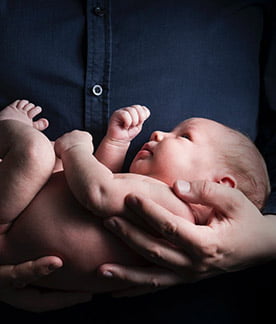Understanding Baby Language
- Published on:
- Last update: 09 October 2023

Making Sense Of Goo Gaa & Ga Ga- Understanding Baby Language
Every animal has its way of communicating mutually since its birth, just as it’s kind. Dogs bark, cat’s meow, cows bellow, horses neigh, so on and so forth. Humans are social animals and as conversationalists, we all have our language of communication.
However, by birth, we as babies, go with the baby talk, Goo Goo Gaga or Gaga Goo Goo. The active and passive voice of babies. We were all born with this natural ability to interact with our fellow humans, be it parents, relatives, or even other babies.
However, as we grow up, we forget what each goo goo gaga means and we end up unable to understand our babies when we ourself become a parent. The explanatory term used for this kind of loose talk is called babbling. Understanding baby language is an important step towards parenting.
Baby talk may mean a lot of things and each babble is toned and pitched differently, just as how a k9 or feline’s bark or meow, respectively, varies with the length, sound, and modulation of it.
These acoustic details in conjunction with the body language and mannerism, help us to understand what our little one is trying to tell us. From feeling hunger to feeling sleepy, restless, or any of the other exhibited emotions, let us look at the different connotations of Gaga Goo Goo, made by babies, to better understand them.
The Art of Babbling by Babies
Newborn babies start to make gibberish sounds of cooing and babbling with their vocal cords as you as 2 or 3 months old. Initially, they are just spurs and mumbles that are short-toned. For the most part, babies wail and whimper to gain our attention.
However, as they grow a bit old within say 4 to 5 months, they start to conjoin individual sounds as though they have their own words to bring together into sentences. Hence the phrase Go-Go Gaga. Babbling is most important for babies as much as their day-to-day milk consumption!
Babies make voluntary and involuntary sounds, just as adults do. Sounds like coughing, sneezing, burping, grunting, etc, all fall under the latter category. The former category includes the babbling, cooing, and mumbling sounds that babies make.
Baby’s initial attempts at trying to talk, include sounds of giggling, cooing, and sometimes even laughing. Crying however is a reflexive action that even newborn babies can do at ease. So that is the most common way of drawing attention towards oneself, even among adults!
Babbling truly starts when your newborn arrives at a half year old enough. As of now, children will make longer sounds that have more assortment, complex tone and volume, and syllable variety. Your newborn has gathered many sounds and commotions from you and others around them.
At the point when your child sounds seem like ga ga, this is alluded to as reduplicated Babbling, or redundancy of a similar syllable again and again. Non-reduplicated Babbling would be the joining of sounds and syllables into, you got it! Gaga Goo Goo!
From Babbling to Being Awesome!
As children begin to grow up a bit, they begin to utilize their hands as an approach to speak with others. They will point at specific items to say “I need that! or offer that to me!” Other than the hand signals and sounds, babies additionally convey by reflexes.
Countless various kinds of reflexes assist parents with getting what their child is attempting to say. As indicated by different examinations, when a child is ravenous, they will in general take hold of their mom’s bosom or areola, which is known as the Sucking Reflex.
Another reflex that children will in general utilize is the Startle Reflex when babies spread out their arms and legs. A child would uphold themselves like this to tell individuals that they are staying away from a fall. Another model is the Hand-to-Mouth Reflex, which is when babies begin to suck on an item.
Babies are as cute and conversational as they can be! Even though they cannot genuinely say words to us, they can in any case utilize non-verbal communication to mention to individuals what they need or how they are feeling. Babies are more brilliant than you might suspect!
To learn more about if your baby is hungry or has had enough click here
Share this post:

